I spent a lot of time wandering the local countryside. I usually see some wildlife of interest on every walk. Sometimes I get really lucky and see something particularly exciting. Today was one of those days.
I was wandering along a country road when I caught a glimpse of this magnificent bird.
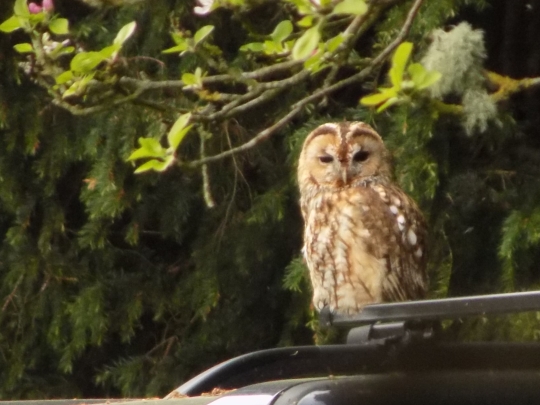
This is of course a tawny owl. Tawnies are well known for being a bird which is regularly heard but rarely seen. Indeed I regularly here tawnies calling locally but I’ve never seen one until now.
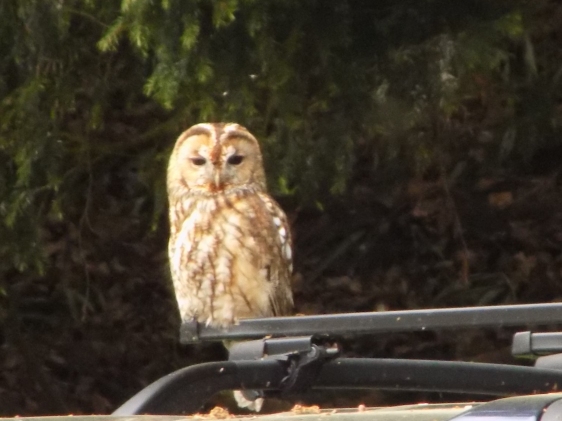
You would expect to see tawnies at night but I found this one at 2:30PM. This is probably it’s roost site- it’s actually sat on a 4×4 in someone’s garden! It certainly looked sleepy, a little wary of my presence nearby but showing no inclination for flying off. I think this was probably the best wildlife encounter I’ve had so far!
In other news, there’s now quite a few greylag goslings on the nursery field, somewhere in the region of fifteen.

I was interested to see that two of the goslings were much lighter than all the others. In some domestic geese this can indicate gender but I’ve not been able to find anything online about why greylag goslings look so different- it may simply be natural variation.
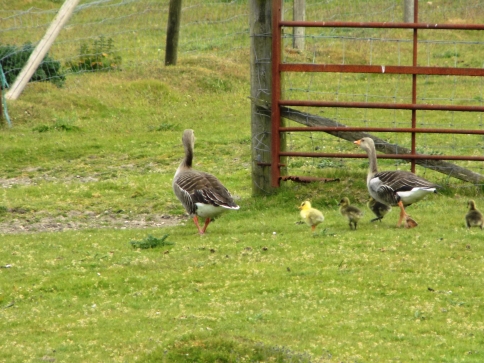
I’ve seen lots of interesting invertebrates recently. A lot of people, even those interested in nature, seem to ignore the smaller animals around them but they are fascinated to find out about.
On one footpath I saw several of these creatures that looked like caterpillars at first. With further investigation I discovered that they were actually glow worm larvae.
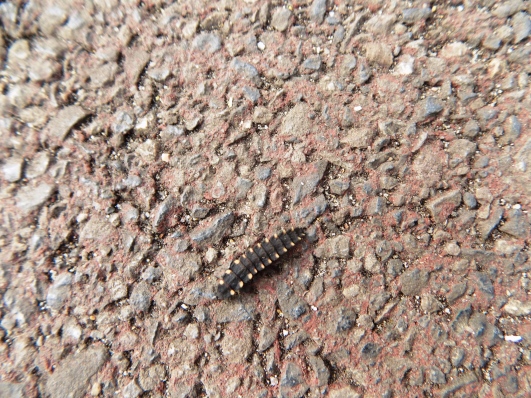
Despite the name glow worms are actually beetles, hence the larvae stage. Larvae and even eggs can emit light but generally it’s the females who do so. They emit a greeny or orange light to attract males which have large, photosensitive eyes.
I recently saw this large fly which is apparently a yellow dung fly (Scathophaga stercoraria).

As the name suggests, this fly is often found on the faeces of large mammals where they go to breed. They are actually really important to the animal kingdom due to helping dung to decompose and useful to humans to as they have been used for many experiments.
Another insect find was this dock bug (Coreus marginatus).
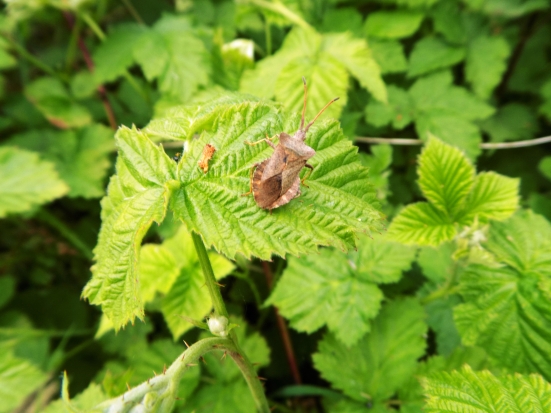
Dock bugs have a more pleasant diet being herbivorous, particularly liking raspberries and gooseberries. Like other members of their family, they can release strong-smelling defensive chemicals if they are disturbed.
I’ve discussed some oak galls here before but never the most famous, oak apples.
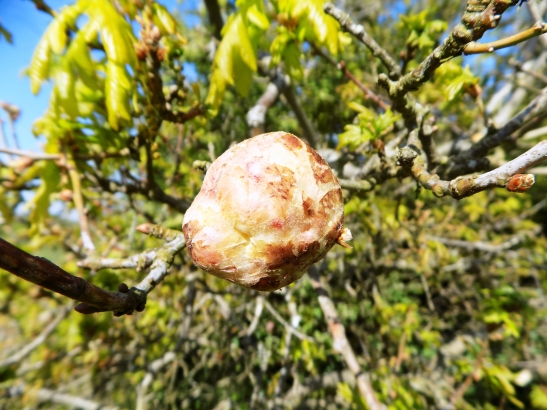
Like other galls, there are not fruit but growths caused by a wasp (probably Biorhiza pallida in this case) chemically inducing them. The larvae feed on the gall tissue and everyone’s a winner as it has no long-term effect on the oak tree.
Well that was an interesting dip into the miniature world around us! I’ll be back next week with much more, including an update on the peregrine falcon chicks.

No comments:
Post a Comment